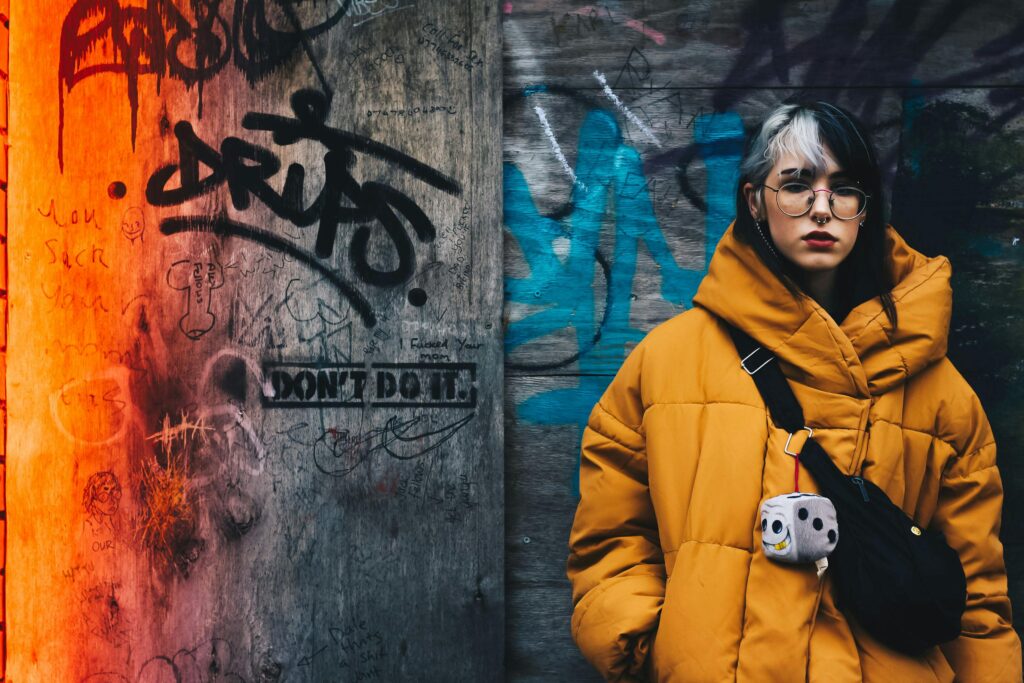Streetwear: The Intersection of Style, Culture, and Attitude

Streetwear is more than just a fashion trend—it’s a cultural movement that has taken the world by storm. Originating from the streets, this style represents the blend of comfort, urban culture, and self-expression. From its humble beginnings in skate parks and hip-hop scenes to becoming a multi-billion-dollar industry, streetwear has grown into one of the most influential fashion movements of the 21st century.
So, what is it about streetwear that makes it so iconic? Let’s explore the history, key elements, and the ways you can incorporate this dynamic style into your wardrobe.
The Origins of Streetwear
Streetwear was born in the streets, and it has always been about more than just clothing—it’s about culture, attitude, and lifestyle. The movement began in the late 1980s and early 1990s, influenced by skateboarding, hip-hop music, and graffiti culture. Brands like Stüssy, Supreme, and A Bathing Ape were among the pioneers that helped solidify the streetwear aesthetic, incorporating graphic tees, oversized fits, and bold logos as symbols of rebellion and individuality.
While it started as a niche subculture, streetwear quickly caught the attention of mainstream fashion. Its ability to merge high fashion with street-level sensibilities made it appealing to both young people and the fashion elite. Fast forward to today, and streetwear has transcended its underground roots, influencing runways, designer collections, and even global pop culture.
Key Elements of Streetwear Style
Streetwear is all about blending comfort with bold expression. But there are a few key pieces that define this style and give it its signature look:
Graphic Tees and Hoodies
Graphic tees and hoodies are the bread and butter of streetwear. Whether they feature logos, artwork, band names, or street art references, graphic tees act as a canvas for self-expression. Hoodies, often oversized and cozy, are just as central to streetwear culture. The beauty of these items is their simplicity, yet they allow for endless creativity through designs, prints, and collaborations with artists and brands.
Sneakers
Sneakers are perhaps the most important piece in any streetwear wardrobe. From Nike to Adidas, and Yeezy to Off-White, sneakers have become synonymous with street style. Streetwear’s relationship with sneakers goes beyond functionality; it’s about collecting, trading, and wearing shoes that make a statement. Limited-edition releases, colorways, and collaborations with top designers and celebrities have transformed sneakers into coveted fashion items.
Oversized Fits
One of the defining features of streetwear is the oversized silhouette. Loose-fitting jackets, baggy pants, and oversized T-shirts and hoodies are staples of the look. This relaxed fit is not only about comfort but also reflects the laid-back attitude of street culture. Whether it’s a hoodie that hangs low or wide-leg pants that flow freely, oversized styles allow for greater mobility and self-expression.Statement Pieces and Logos
Logos are everything in streetwear. A large logo or graphic across a T-shirt, hoodie, or even sneakers serves as a bold declaration of affiliation with a brand or movement. Popular streetwear brands such as Supreme, Off-White, Palace, and Fear of God are known for their instantly recognizable logos. It’s not just about the brand; it’s about what that logo says about you—whether you’re into skate culture, street art, or high-end luxury.Streetwear Accessories
Accessories like snapbacks, bucket hats, chunky chains, and designer backpacks help complete a streetwear look. While the clothes are the centerpiece, these accessories add personality and flair. Hats often feature bold logos or unique embroidery, while chains and jewelry become symbols of status and style within the culture. Backpacks and crossbody bags from top brands also have a place in streetwear, offering both function and fashion.
The Influence of Hip-Hop and Skate Culture
Hip-hop and skate culture have been the driving forces behind streetwear’s rise. In the 80s and 90s, skateboarders began wearing practical yet stylish clothing that could withstand their active lifestyle while still looking cool. As skateboarding grew in popularity, brands like Stüssy and Supreme emerged, initially catering to skaters but soon expanding to a larger youth audience.
At the same time, hip-hop culture was exploding, with artists like Run DMC and Jay-Z setting trends in music and fashion. Hip-hop’s relationship with fashion was powerful, as artists often sported high-end streetwear pieces or customized apparel that became instantly iconic. The influence of these cultures in streetwear is undeniable, as both skate and hip-hop fashion continues to inspire the designs, looks, and ethos of modern streetwear.
Streetwear’s High-End Evolution
What’s fascinating about streetwear is how it merged with high fashion. Designers like Virgil Abloh of Off-White, Kanye West with Yeezy, and Pharrell Williams with Adidas began bringing streetwear into the luxury fashion world. What was once confined to the streets is now on the runway. Streetwear has become synonymous with luxury, thanks to collaborations between high-end brands like Louis Vuitton and Supreme, Gucci and The North Face, and Balenciaga and Adidas.
These collaborations are a reflection of the cultural shift in fashion, where the lines between high fashion and street style are increasingly blurred. once seen as a rebellion against traditional fashion, has now been accepted by the high fashion world as a legitimate and influential style.

